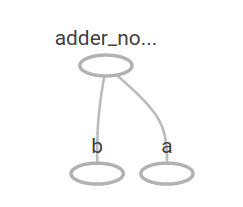lab 01 Getting Started With TensorFlow
https://www.tensorflow.org/get_started/get_started
Check TF version
import tensorflow as tf
tf.__version__
'1.0.0'
Hello TensorFlow!
# Create a constant op
# This op is added as a node to the default graph
hello = tf.constant("Hello, TensorFlow!")
# start a TF session
sess = tf.Session()
# run the op and get result
print(sess.run(hello))
b'Hello, TensorFlow!'
Tensors
3 # a rank 0 tensor; this is a scalar with shape []
[1. ,2., 3.] # a rank 1 tensor; this is a vector with shape [3]
[[1., 2., 3.], [4., 5., 6.]] # a rank 2 tensor; a matrix with shape [2, 3]
[[[1., 2., 3.]], [[7., 8., 9.]]] # a rank 3 tensor with shape [2, 1, 3]
[[[1.0, 2.0, 3.0]], [[7.0, 8.0, 9.0]]]
Computational Graph
node1 = tf.constant(3.0, tf.float32)
node2 = tf.constant(4.0) # also tf.float32 implicitly
node3 = tf.add(node1, node2)
print("node1:", node1, "node2:", node2)
print("node3: ", node3)
node1: Tensor("Const_1:0", shape=(), dtype=float32) node2: Tensor("Const_2:0", shape=(), dtype=float32)
node3: Tensor("Add:0", shape=(), dtype=float32)

sess = tf.Session()
print("sess.run(node1, node2): ", sess.run([node1, node2]))
print("sess.run(node3): ", sess.run(node3))
sess.run(node1, node2): [3.0, 4.0]
sess.run(node3): 7.0
a = tf.placeholder(tf.float32)
b = tf.placeholder(tf.float32)
adder_node = a + b # + provides a shortcut for tf.add(a, b)
print(sess.run(adder_node, feed_dict={a: 3, b: 4.5}))
print(sess.run(adder_node, feed_dict={a: [1,3], b: [2, 4]}))
7.5
[ 3. 7.]
add_and_triple = adder_node * 3.
print(sess.run(add_and_triple, feed_dict={a: 3, b:4.5}))
22.5